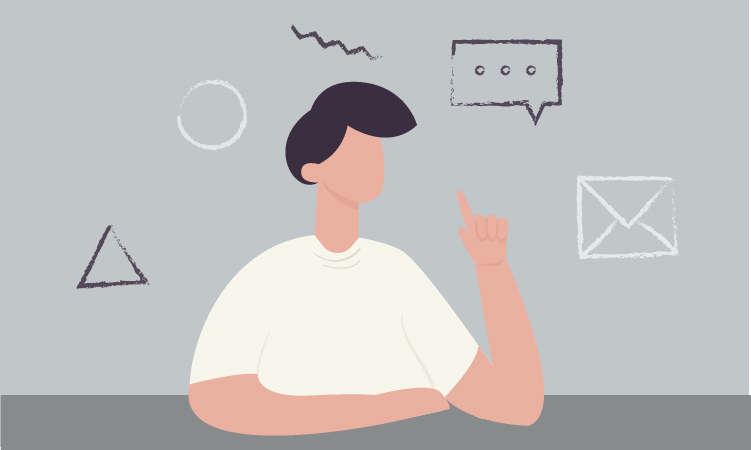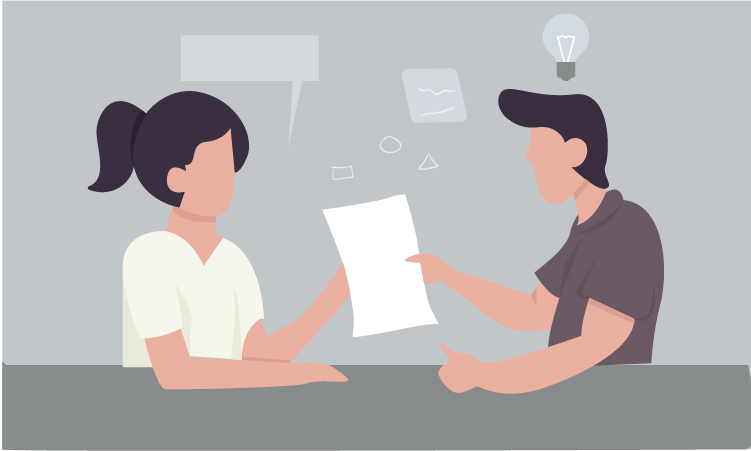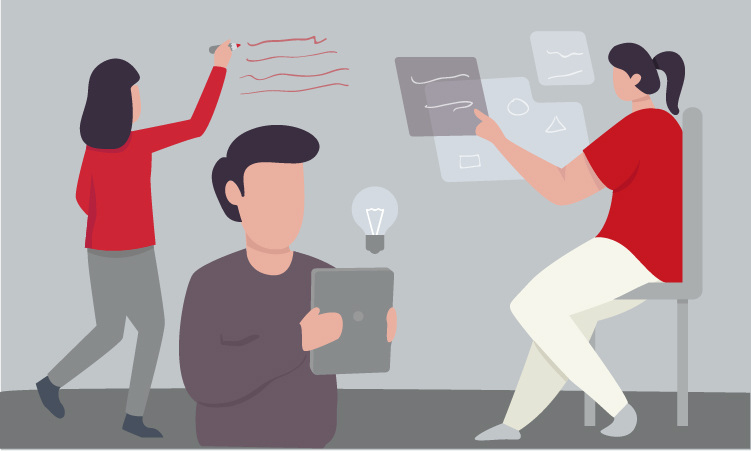


“Alone we can do so little; together we can do so much.” – Helen Keller.
The field of User Experience is all about observing, understanding, collaborating and communicating. This makes it vital for designers to work in collaboration, not just with each other but with other teams as well. The most acclaimed and sought after designers have two important skills, in addition to those fundamentally required for design – good communication and the ability to collaborate. This article explains the benefits of designers working collaboratively with other teams.
As designers, we focus on ensuring that our designs match the needs of users, and solve their pain-points while keeping the business goals in mind. It is important for us to understand the bigger picture and not get stuck within the processes to find perfection in our design. Our designs should be user-centric while being technologically feasible, and viable for the business; a whole array of complementary yet contrary fields are woven together. Working in collaboration helps designers understand how inter-team members work together and their needs, pain points, and preferences. We can also then be in a better position to empathize and understand different viewpoints to ensure a seamless transition of deliverables.

To successfully deliver a project to the client, it is the combined efforts of all teams, including but not limited to the sales, project management, research, design and developer teams. The combined efforts from all the team members ensure that all phases of strategy, design, and delivery are executed correctly, efficiently and proficiently.
Working in collaboration with different internal teams gives designers the opportunity to understand exactly how they work together in tandem to ensure the successful completion of the assignment at hand. It also decreases the learning curve of designers to a large extent. Amongst the skills you should have to be a successful designer, understanding the functioning of inter-teams is an important one.

“Fears are educated into us. And if we wish, we can educate them out.” – Karl Augustus Menninger
Amongst human beings, it is common to be afraid of a plethora of things, such as being judged, communication, taking responsibility, taking initiatives, and so on. Designers, too, face these fears amongst many others. It is important to make everyone feel equal, respected and empowered to be able to take on any task. By creating a healthy collaborative environment, we can ensure that there is no scope for one to be fearful of anything. A healthy and open environment allows designers to feel at ease, enabling them to interact with each other and communicate freely and effectively.
Effective team collaboration can encourage peers to take complete ownership of their work and lead design deliverables. Designers can be motivated to take responsibilities and communicate their thought process independently to clients and stakeholders. This will boost their confidence and overall trust in the team, granting them invaluable skills every designer needs on their resume while eradicating any engulfing fears.

“Communication – the human connection – is the key to personal & career success.” – Paul J. Meyer
To add to the previous point, when you discover the potential and scope that people have to propel themselves and the project forward, another important aspect comes into play. One of the must-have soft skills for creative professionals is proper communication. Team collaborations can help designers be very constructive while communicating ideas, important decisions and sharing their thought process with peers. Thus we can also ensure an encouraging environment during constructive design critique sessions.

When designers build a great relationship amongst their peers, there is a great opportunity to gain tons of knowledge about projects falling under different industry domains. For example, hundreds of designers within a design office/studio environment may be working on diverse projects interacting with clients and stakeholders from different domains.
Designers can share their experiences with their peers about the projects and the thought process they utilized to proceed with the project engagement. Along with learning the skills you need to be a designer, you also gain important soft skills in UX leadership.

“A team is not a group of people who work together. A team is a group of people who trust each other.” – Simon Sinek
Working in sync with inter and intra-team members, help us empathize with their needs, involve them during important discussions, make us comfortable to reach out to each other for any assistance desired. A positive environment like this helps to instill trust in teams and build an amazing culture.
Together, the contribution of a team is always more valuable than an individual contribution. Every successful project engagement is a result of an amazing team effort. Helping each other at work ensures that we all gain knowledge, become better day by day, grow by giving equal opportunity to everyone to lead and learn.

It is quite amazing to think that all the people working on the project work towards the same goal, irrespective of the team they belong to. When everyone has a common, unified goal, any vision can be achieved and benefits can be distributed to the team members. Excellent team collaboration within internal and external teams can help to achieve revenue goals as well.

To conclude, we believe that the key to great collaboration is building great relationships and also ensuring the effective acquisition of soft skills for designers. This leads to synchronized team efforts and long-lasting trust and relationships between the company and the clients. A good relationship with the client will certainly bring in more client references, more projects and hence, will generate more revenue for the company.

